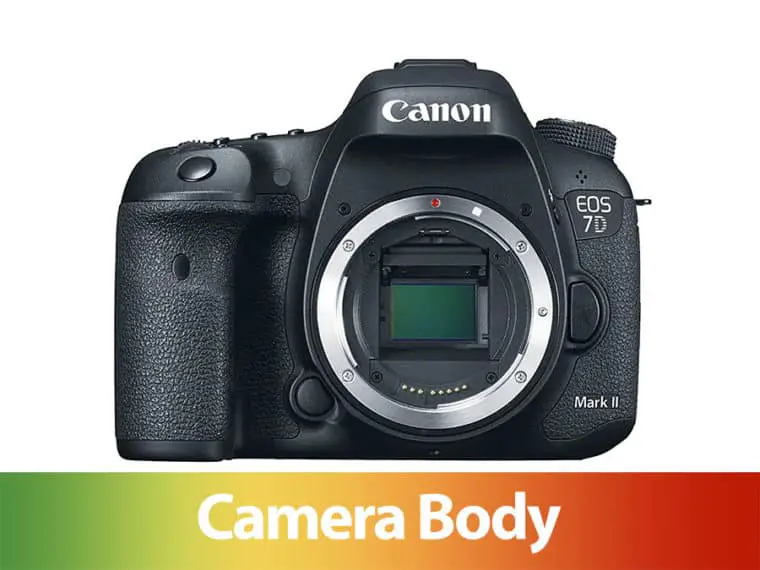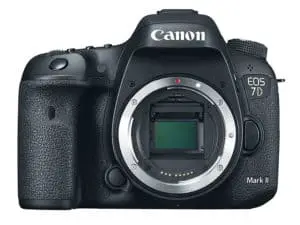So you are thinking about buying a camera and getting into photography. If you are like me, as you look into them you see a whole lot of numbers and words that you don’t understand and have been overwhelmed by all of the choices available. Let’s see if I can help you out with that.
The first thing to understand is that these days it is nearly impossible to get a “bad” camera. Even the least expensive entry level digital cameras with interchangeable lenses (not the point-and-shoot, though they are mostly dead due to smartphones) can be used to create stunning images. I have tried many of them over the years and I am absolutely convinced that the camera body doesn’t play nearly as big a role in creating compelling images as other factors like the knowledge of the photographer and lenses.
OK, great, so you don’t have to spend top dollar to get going, but that isn’t helpful advice is it? You have looked at dozens of cameras on Amazon and the like and you need help choosing which to get. Let’s walk through a few things I am sure will help.
Don’t Need “Full Frame”
If you haven’t heard this yet, the advice from other photographers to buy a “full frame” camera is going to come hard and heavy. Don’t worry at this stage what “full frame” means but as you shop for cameras if a “crop sensor” camera is all you can really afford I promise you it will be just fine.
If you think about it, camera manufacturers have a job to do, they have to sell cameras. They are good at their job or they wouldn’t be in business. That means they are working extremely hard to convince you to buy the most expensive camera or that the camera you might already have is not good enough and spending thousands on the latest top of the line model is the only path to good photos.
My advice to photographers is to tune out all of that noise and avoid the temptation to “upgrade” your camera body to early. Entry level cameras are more than capable of creating beautiful images across all genres of photography. You are far better off invest the money you would spend on a new body in training and lenses. Check out this podcast episode to hear more about When is it Time to Upgrade Your Camera?
Not only do you NOT NEED a full frame camera to create stunning images, you do not need to upgrade your camera every year or two! The Canon R7 and Nikon Z5 are excellent choices for serious hobbyists that can be great for years.
Getting Started Camera Body
Cameras are being released constantly and I am not updating this page every time a new camera is being released. I will offer some specific recommendations but first let me tell you what a complete beginner should look for when choosing a camera.
Follow Your Mentor
Do you have a possible photography mentor in your life? Think about the people you know and I am sure there are several who have a camera and are a little further down the path of photography who could help you. If so, the path of least resistance is to buy a camera that is the same make they have chosen.
The camera manufacturers are always leapfrogging each other in feature/function. Again, that is what sells cameras. Megapixels, frame rates, buffer size, ISO performance, these are all things the marketing materials will outline as a camera is being sold to you and I’ll offer some advice on what you may want to consider. None of those things are as important as a possible mentor.
Most photographers pick a camera and stick with it for a long time. I made my decision back in 2014. I was totally new to photography and had no idea what I needed to look for. All these years later I am still using the same make because I have made investments around that make and switching means a lot of work selling off all of the equipment.
Serious Hobbyist Camera Body
Again, don’t feel like you have to get into a full frame camera to be a “serious” or “advanced” photographer. There are advantages with full frame to be sure, but the cost difference is substantial and I highly recommend photographers start and stay with a crop sensor while they build up both their technique/skill and their lenses.
That said, there are advantages as a serious hobbyist (like me) to having the top end of the consumer line of bodies. I started out with the Canon 60D body in 2011. I didn’t have a clue what I was doing when I picked that camera. I had a Canon point and shoot already and thought I would just stick with Canon. I wanted the DSLR because I needed to capture good images of my kids playing sports, doing dance, etc. So I picked the model that was a couple up from the bottom hoping that would get the job done.
At first it didn’t. It was bad enough my wife was concerned that I got the wrong camera because the photos of the kids catching footballs in the basement were still blurry! Turned out to be the photographer and not the camera.
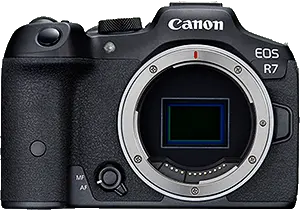
The 60D served me very well until I learned enough about how to use a camera to know for sure my ability to create images would be better served by the slightly more advanced features of the Canon 7D Mark II. The frame rate, the focus points, and the focus system were all things I knew I needed to shoot whatever I wanted to. The weather sealing and better body build were an additional bonus.
Here in 2023 serious hobbyists shouldn’t buy anything but a mirrorless camera. If you want to go with Canon, my recommendation is the Canon R7. Other very good options are the Nikon Z5, Fuji X-S20, and Sony a6400.
Beginner Camera Body
The most important thing is to not spend forever choosing a camera body. Get one and get started. Check with family to see if they have an old body that isn’t being used anymore. Check with friends. There is so much to learn and so much fun to be had creating images that getting mired down in choosing a camera body is wasting time.
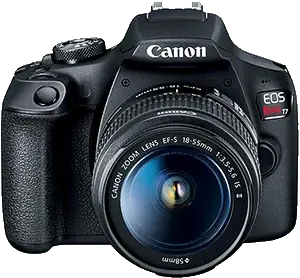
I also recommend that you look around you at people who do photography. These are people who can help you and in-person help is SO much better than a blog post or YouTube video. Ask them what body they are using and consider getting a SIMILAR model. The same manufacturer but not necessarily the same exact body.
I can recommend entry level cameras from pretty much any camera manufacturer. It doesn’t even have to be new, or newish. A used Canon, Nikon, Fuji, or Sony several years old will be more camera than you will know how to use for a while.
Yes, if you really get into photographer and stick with it you will outgrow it. I recommend investing less in your first camera, about $500 or less (for just the body so lenses don’t count), then dive in and learn EVERYTHING about that camera. Learn how to use every feature, every button, every menu option.
When you outgrow that first camera, you will have a much better understanding of what it is you want. Which manufacturer you want to go with. What features matter to you. You can rent cameras and lenses and try them out to see where you will want to invest further and make an educated choice. Like me with my Canon 60D, there is no possible way you can make an educated choice when you are buying your first camera.
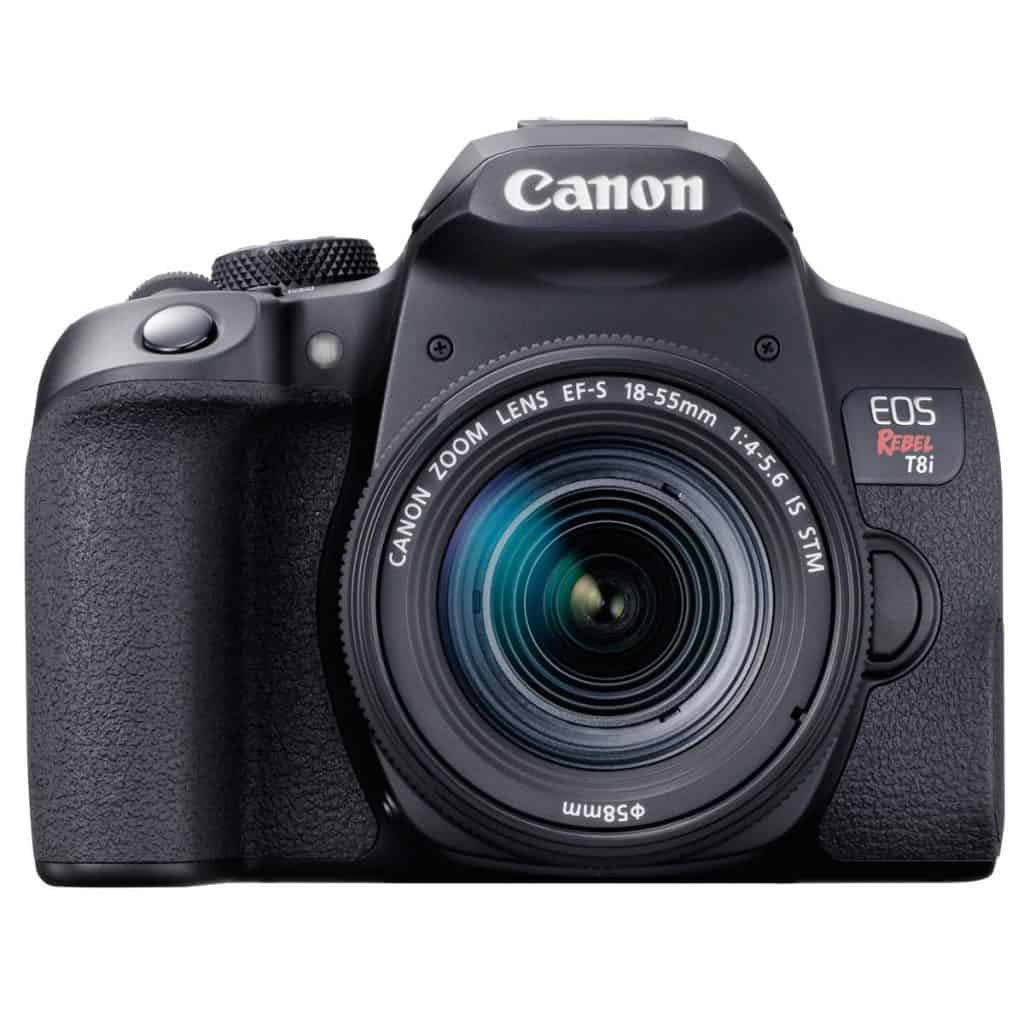
If I was starting today I would choose a Canon EOS Rebel T7 or a Nikon D5300 because the body alone costs about $500. Choose between them based on what photographers around you are using and what is in stock. If they use Canon, get a Canon. If they are Nikon choose the Nikon. If you don’t really have much in the way of help around you and this is going to be solo journey, choose the Canon.
What about mirrorless? Aren’t these DSLRs dead? Yes, they seem to be but the DSLRs are still available for now and at a cost far more reasonable for a beginner who wants to see if they really like photography.
The only reasonably priced mirrorless options for the beginner are the Fuji X-T1 or the Sony a6000, but again it is more important you have a similar model as a local mentor than getting a mirrorless camera. A beginner will have a tougher time learning with either of these cameras if nobody around them knows and uses the same brand.
Camera Kits and “Kit” Lenses
The serious hobbyist likely already has their kit, so I will focus here on the kit for a beginner. “Kit” lenses is a term you are going to hear a lot, they are named this because they often come with a camera when you buy one. Along with a lot of other things like an SD card, a tripod, lens wipes, a carrying case, etc. Everything there in the kit, all of it except the camera is garbage.
Well, the lenses are a step up from garbage but the rest of that junk is really junk. It can help you get started day one as you first unbox your camera, sure, but none of it is going to last and PLEASE DO NOT SPEND EXTRA MONEY ON A KIT!!!!!!
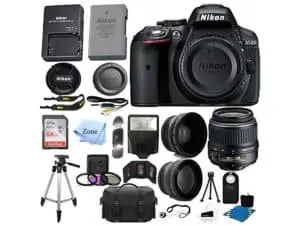
I remember very well making my first Amazon purchase of that Canon 6D. I saw listings for just the body. Then I saw listings for the body and a lens. Finally, there were lots of listings for the body, a lens, and all this other stuff! I didn’t know any better and I thought it would totally be worth it to spend an extra $50 or so to get all of that other loot. Don’t do it! That stuff is not worth the extra $50.
Yes, you need that other stuff to. Lenses, duh. Tripod, yep. SD card, of course. OK, I guess if you don’t want to buy them individually and go into it fully understanding that it is all little better than cardboard connected by bubble gum and duct tape (not truly, but the connotation is right) then get that kit and get going. You need to get on your way. Just know that you are going to be buying real versions of those things probably pretty quickly.
Look at my other recommended products for beginners and hobbyists here on the site and that will server you far better than the junk in those kits.
Well, that is except for the kit lens. That is worth getting when you buy your camera if you can find a kit with just the camera and lens. Usually there are a couple of “kit” lens options and you have to pick just one. To make it really hard the lenses are described by a bunch of jumbled letters and numbers that a beginner has no chance of understanding.
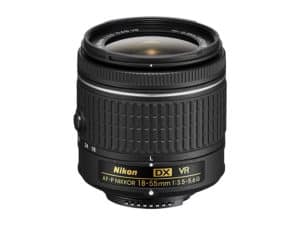
I have done podcast episodes on the topic (Choosing Which Lens to Buy, Making Sense Of Lenses, What Makes A Lens Fast and T-Stops, Lenses On Crop Sensors) that will help. I suggest you get the 18-55 f/3.5-5.6 lens. The “18-55” part is the thing to look for. Doesn’t have to be exactly those numbers, but something close to 20 and then close 50.
This “kit” lens will be your truly “first” lens, but you should know it isn’t great. You can create some decent images using it, and it is certainly enough to get you learning, but hopefully you will outgrow that lens in the first few months of your photography journey. The next one I recommend getting is a “nifty fifty”. Check the product pages for that.
Finally, if you can get a kit for LESS money with the camera and the lens and all the other junk, then get that. You are really wanting the camera and the lens, but I have seen it a lot where a full kit is less expensive than buying the camera body and the lens separately. That makes sense to buy of course. It is less money. Just dont’ spend MORE money on a kit with all that junk in it.

